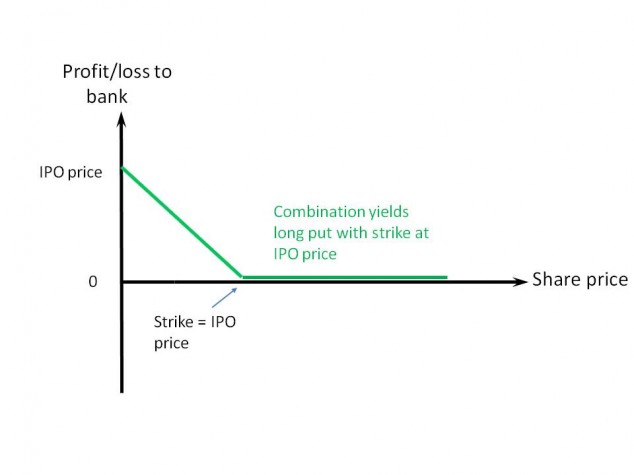Contents:


Net https://1investing.in/ do not account for cost of goods sold, general expenses, and administrative expenses which are analyzed with different effects on income statement margins. Net sales allow a company to better evaluate its profits because they include deductions such as allowances, returns, and discounts. This metric can also help you identify which costs are creating the greatest losses in the sales process. A high volume of discounts might attract business but severely cut into your profits.
It would be impossible to calculate important revenue metrics, such as net sales and gross profit margins, without gross sales. Gross profit and net profit provide insights into different aspects of a company’s operations. As such, companies should focus on improving both gross profit and net profit margins. Gross profit is important because it tells us how efficient a company is in its production and selling process. Net profit is important because it reflects the overall profitability of the business.
Sportsman’s Warehouse reports 7.1% sales decline in fiscal 2022 – Retail Insight Network
Sportsman’s Warehouse reports 7.1% sales decline in fiscal 2022.
Posted: Thu, 13 Apr 2023 13:54:46 GMT [source]
All you have to do is plug the values into the formula and that’s it. Understanding gross and net sales terms are crucial to every business, regardless of size. In this example, costs of deliveries, supplier charges, taxes, and other expenses were not taken into consideration. Therefore, it is significantly essential for companies to produce an accurate sales forecast – and for good reasons.
How is this relevant to business financing?
Non-operating items are those that are not related to the primary operations of a company. This can consist of utilities, rent, property taxes, salaries or wages, and business travel expenses. Operating expenses are the residual direct costs that are not included in COGS. Operating expenses, often abbreviated as OPEX, are the costs incurred in running the day-to-day operations of a business. It includes the material and labor costs directly used to create the good or produce its services.
Even though it was completely functional, the customer could not use it. Returns are when the goods are returned by the customers for either being defective or not being useful. A product can be defective because of a manufacturing issue or because of shipping damage. Cost of Sales is often confused with Cost of Goods Sold —and for good reason. The two metrics measure the same thing, but they’re used by different types of companies. “I use our Net Sales to help my managers and team to evaluate how well we are selling our services,” Matt Bertram, CEO & SEO Strategist at EWR Digital, added.

However, it can also be lumped together with operating expenses when reflected in income statements. SG&A is sometimes listed as a separate line item on income statements under the cost of goods sold, below expenses. They are all found in the income statement of a company and represent profit at different parts of the earnings process and production cycle.
Calculating Gross Sales
It’s useful, certainly, in determining a company’s value and worth; however, it doesn’t begin to represent a company’s profits or even how much money it truly made. With advanced reports and dashboards spanning both sales and marketing activities, teams can get actionable insights and make meaningful decisions with the help of CRM for analytics. As a small business owner, you likely feel your brain is at full capacity regarding financial knowledge and formulas. However, understanding gross and net revenue can help you make intelligent decisions about your business. Meanwhile, net revenue is the resulting amount after the cost of goods sold and deductions of sales discounts. As your gross sales vs net sales are considered, your sales process can take a right turn in the industry.
- Your company may sell refurbished vehicles, and the customer received the vehicle with a minor issue with the tail lamp.
- A boutique clothing store made $5,000 in total sales last month – this is the gross sales revenue for the period.
- The cost of revenue is the total cost of manufacturing and delivering a product or service and is found in a company’s income statement.
- In other words, net sales can be defined as the final amount of sales revenue earned by an organization after all the deductions and adjustments are accounted for.
- If a company does not record sales allowances, sales discounts, or sales returns, there is no difference between gross sales and net sales.
If your gross sales are high but net sales indicate that one of your products is being returned more than usual, you can use this information to identify what’s wrong. Then, you can make changes to provide a better product or service to your customers. Revenue is important to business leaders and investors because it demonstrates a company’s ability to bring in money. While many consider net sales a more relevant metric, gross sales still has its place.
Gross Revenue Vs. Net Revenue
Put simply, present value formula sales are your total before any VAT, discounts or other amounts are removed. Net sales are the result after these additional deductions are made. Gross sales allow a company to determine their ‘top line’, the total revenue before these amounts are removed. A sales return occurs when a buyer sends a product back to a seller for a partial or full refund. That refund is deducted from gross sales when calculating net sales.
That isn’t to say that having sales is a poor choice or something to be avoided. Businesses have to find a balance between offering sales and low prices to draw customers and being sure to make a profit. Unless you offer tremendously specified goods or services, it’s always a balancing act. In this case, the two numbers are both important for accounting and profit calculation – but they measure different things.
Questions to Assess Sales Pipeline Health
Gross sales incorporate all of these deductions, while net sales are a company’s gross sales minus these three deductions. In this post, we’ll show you how to calculate your net and gross sales so you can create accurate sales forecasts. We’ll walk you through the formulas, outline their differences and show you how to identify issues or opportunities within the sales process.
- However, you find it’s still deterring a sufficient number of pests, and you don’t want to go through the trouble of sending it back.
- Bad debt expense is an expense that a business incurs once the repayment of credit previously extended to a customer is estimated to be uncollectible.
- While your business’s gross revenue and net revenue metrics are important, they don’t tell the whole story of the company’s financial health.
- You measure your business’s profits and revenue with a variety of metrics.
You should look at up-to-date profit information to get the most out of your financial analysis. Yet, for most early-stage startups, dedicating significant labor to financial analysis is not feasible. Here are 7 ways in which workflow automation benefits and transforms businesses. Each of these measurements is important, so you should understand their significance and what they can tell you about your business. Start off with a powerful ticketing system that delivers smooth collaboration with unlimited room for your customers. Sloovi offers a suite of powerful and flexible SaaS applications that allows you to solve tricky problems and scale your business to the next level.
What is Feature Benefit Selling and How to Use it
Based on the above, it can be seen that Apple’s net income is lower than its total revenue. This is because the net income includes the expenses Apple incurred during that period. This example clearly shows the difference between revenue and income when referring to the financials of a business. Increasing gross revenue indicates a strong product line and fair demand in the market. That presents the potential for increasing company growth and sales with financing. That’s especially true if you plan on getting funding for company expansion, such as opening a new store location.

Net sales are the gross sales made, minus the allowances, discounts, and returns. Gross margin considers the costs of goods sold while net income is the bottom line that factors in operating costs. Gross sales is the total amount of sales made within a specific time. This only includes the money generated by adding up all your sales figures into a single amount.
The company’s gross sales are calculated by multiplying the number of units sold during the period by the selling price per unit. Gross profit ratio is one metric that provides key insights as to the profitability of your specific products or services. Also called gross profit margin, gross profit ratio is the percentage of gross sales of a particular product or service that is profit above the cost of producing that good. This helps companies decide whether they should raise prices or cut costs related to making and selling products.
As opposed to the gross sales figure, net sales is the total amount after discounts, returns and damaged goods are removed. Net Revenue (or “net sales”) refers to a company’s gross revenue after adjusting for returns by customers and any incentive discounts. A wrong calculation of gross sales figures would ultimately impact the calculation and accuracy of the net sales figure of an organization. On the other hand, a wrong calculation of net sales figures will not impact the calculation and accuracy of the gross sales figure. This is because of the fact that the gross sales figure is calculated before the calculation of the net sales figure. Net sales depend on the gross sales as the net sales figure is derived after adjusting the value of returns, discounts, and the allowances of the period from the value of the gross sales.
This depends upon the employee’s tax filing status, tax bracket and the number of allowances chosen by the employee in their W-4 form. Gross sales are the total that you made from sales without taking other factors into consideration. According to Merriam-Webster, the gross in gross sales means “consisting of an overall total exclusive of deductions.” This means that your gross sales don’t consider returns, discounts, or inventory loss. You measure your business’s profits and revenue with a variety of metrics. Net income, gross revenue, and net revenue are some of the common metrics for this. Gross and Net sales are two of the most common metrics used to track the performance of a business.